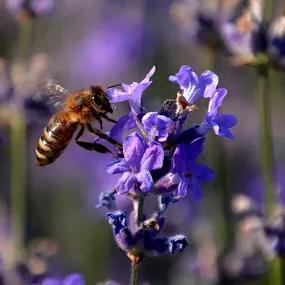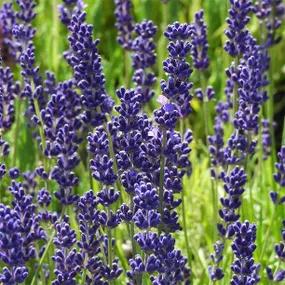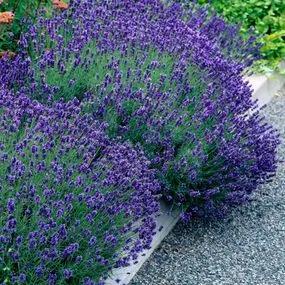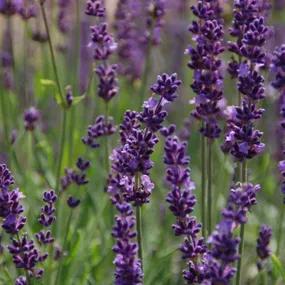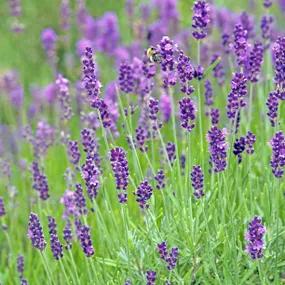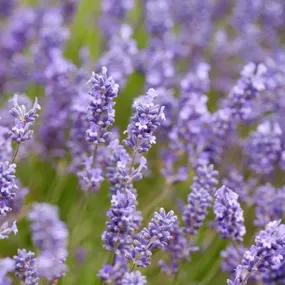All Lavender can be planted in a row as fragrant ornamental hedging and edging, which is either the same as hedging, or lower, depending on who's saying it.
But the most popular varieties for use as hedge plants in British gardens are English Lavenders, followed by the larger Dutch Lavender / Lavandins.
Classic lilac or purple flowers are hedging favourites because their massed effect along the row, contrasted with the leaves, is more striking than white or pale pink flowers, especially from a distance where those colours fade into the green. Strong purple flowers en masse "sizzle" over the green in an electrifying haze.
- English Lavender is more compact and bushy to the base, great for spilling over edges and softening lines.
- Dutch Lavender is more upright, has taller flower stems, and the strongest aroma.
- They work well in parallel rows, with the English Lavender in front
Can I Use French Butterfly Lavender as Hedging?
Yes, you can certainly use French Butterfly Lavender as hedging.
The main reason it's not more common as a hedge is the leaves don't look as nice through Winter in most areas, which is more noticeable in such a significant feature.
It's hardy, but not quite as tough as the others, sustaining more cosmetic damage over Winter in colder Northern regions.
In the warm South West of England and Wales where Winter is milder, especially in a sunny, sheltered spot, French Butterfly Lavender makes a fine hedge.




 2 (1).webp)
